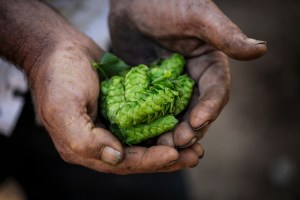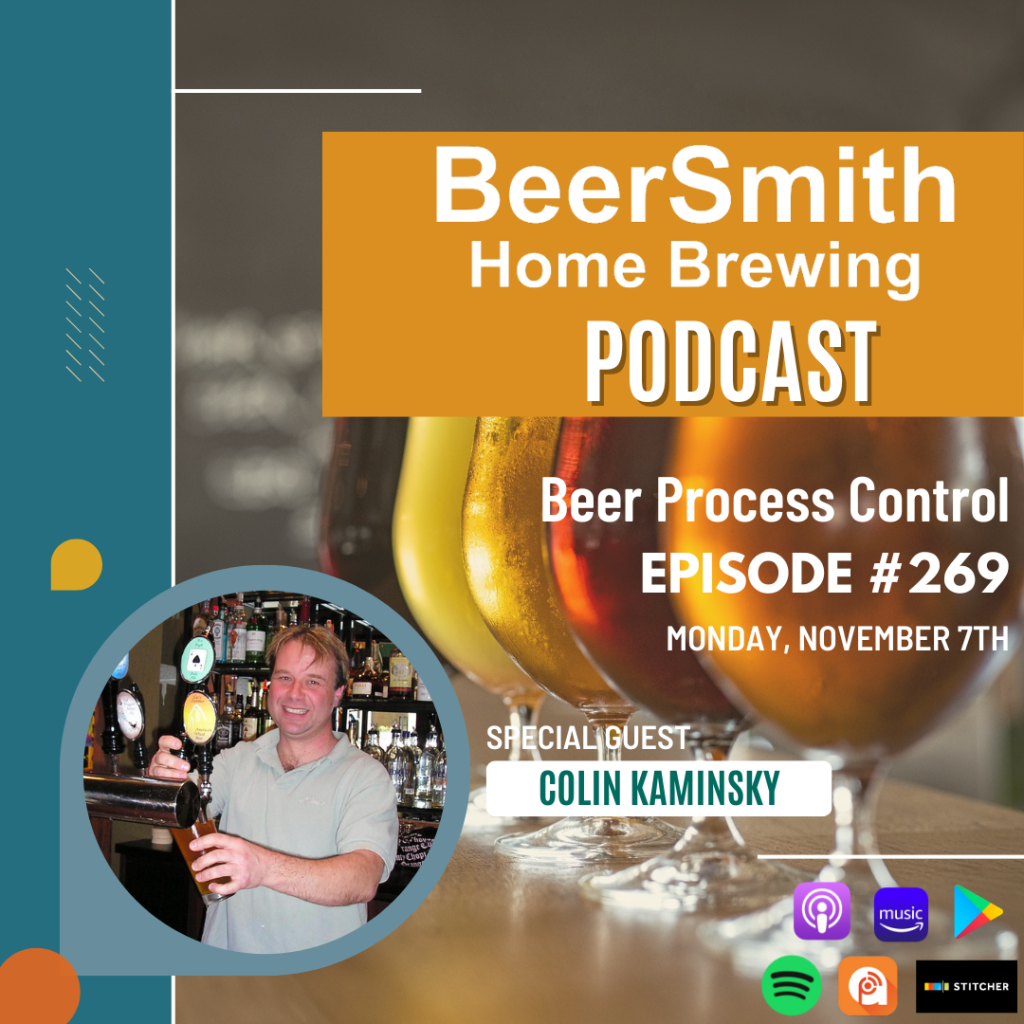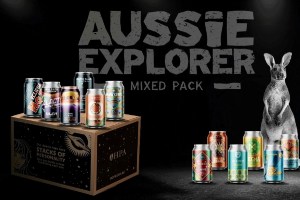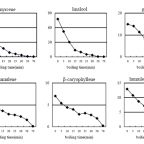
We've got a couple of double passes to give away as the hop harvest festival returns to Beechworth on March 25.
The post Win tickets to the High Country Hop appeared first on Beer & Brewer.

We've got a couple of double passes to give away as the hop harvest festival returns to Beechworth on March 25.
The post Win tickets to the High Country Hop appeared first on Beer & Brewer.
The connection between the craft beer world and ski culture is undeniable. A good beer is often a perfect way to cap a day on the slopes.
The post A Beer & Ski Lover’s Guide appeared first on CraftBeer.com.

Growers plus brewers from Mountain Culture and Rocky Ridge discuss how advanced hop products and hopping techniques are shaping the future of hop forward beers.
The post Hop forward: On the frontier of beer appeared first on Beer & Brewer.
 This week Chris Graham and Vito Delucchi from MoreBeer join me to discuss how to free the thiols in your hops to create fruity IPAs and New England IPAs. Subscribe on iTunes to Audio version or Video version or Spotify or Google Play Download the MP3 File– Right Click and Save As to download this […]
This week Chris Graham and Vito Delucchi from MoreBeer join me to discuss how to free the thiols in your hops to create fruity IPAs and New England IPAs. Subscribe on iTunes to Audio version or Video version or Spotify or Google Play Download the MP3 File– Right Click and Save As to download this […] 
US brewery and their brewmaster Matt Brynildson will join local breweries at the hop harvest event in March.
The post Firestone Walker headline High Country Hop 2023 appeared first on Beer & Brewer.
We started this series of IPAs when we opened to showcase our favorite hop varieties. We recently released #22 (Citra-Motueka). All of the batches were 6.5-7.5% ABV, with similar malt bills (American pale barley, chit, wheat, and oats), fermented with an English-leaning yeast, and dry-hopped post-crash at 3-4 lbs/bbl. The table below is the average Untappd score of all batches dry hopped with the variety listed.
| Hop | Average |
| Motueka | 4.221 |
| Nelson | 4.190 |
| Azacca | 4.188 |
| Citra | 4.177 |
| Riwaka | 4.169 |
| Amarillo | 4.163 |
| Simcoe | 4.162 |
| Galaxy | 4.155 |
| Mosaic | 4.144 |
| Columbus | 4.129 |
| Hydra | 4.122 |
| Vic Secret | 4.122 |
| Strata | 4.107 |
The table below include all 65 "big batch" IPAs and DIPAs we've released that don't contain adjuncts (although I did include Phantasm beers). These are diverse in terms of recipe construction, alcohol strength, and dry hopping rate. As a result, the scores are a bit more prone to bias compared to the Cheater Hops data set.
| Hop | Average |
| Galaxy | 4.220 |
| Hallertau Blanc | 4.220 |
| Cashmere | 4.217 |
| Nelson | 4.203 |
| Motueka | 4.186 |
| Mosaic | 4.186 |
| Citra | 4.185 |
| Simcoe | 4.178 |
| Azacca | 4.157 |
| Riwaka | 4.150 |
| Amarillo | 4.141 |
| Vic Secret | 4.131 |
| Taiheke | 4.130 |
| Columbus | 4.129 |
| Strata | 4.113 |
| Hydra | 4.096 |
| Talus | 4.090 |
| Sabro | 4.075 |
| Lotus | 4.040 |
| Idaho Gem | 4.010 |
| Lemondrop | 4.010 |
| Sultana | 3.990 |
For some batches you'd expect to see a high rating due to pairing two great hops together (e.g., Nelson/Galaxy or Mosaic/Citra). Both varieties score well across all our beers, so no surprise combing them results in a well-rated IPA. More interesting is sorting by the average standard deviation for the hops included. This shows which combinations rated higher than expected given the average scores for those hops across all beers. Snip Snap (Citra/Galaxy), Cheater Hops #22 (Citra/Motueka), Shard Blade (Mosaic/Galaxy), Cheater Hops #13 (Mosaic/Simcoe), and The Dragon (Nelson Sauvin/Mosaic/Hallertau Blanc) were all in the top-10 "overachievers." These hop blends follow different approaches either "leaning into" a particular flavor (fruity, or winey) or balancing fruity with a danker variety.
Rounding out the top-10 are two all-Simcoe (Cheater Hops #12 and Drenched in Green), two all-Mosaic (Fundle Bundle and TDH Trial #1), and an all-Nelson beer (3S4MP). Certainly a sign that these hops can shine alone compared to Citra and Motueka which are highly rated in blends, but haven't exceled in single-hop beers (despite our best efforts). Of course you need a great lot of hops for this to work; the bottom-10 also includes single-hop beers featuring: Simcoe (Cheater Hops #9), Nelson Sauvin (Cheater Hops #11), and Mosaic (Fumble Bumble)!
Two beers with Galaxy and Nelson (Cheater X and X2) each had a standard deviation close to 0. They still rate well, but no better or worse than expected across all beers with Nelson or Galaxy.
Surprisingly three of the bottom four included three varieties Cheater Hops #7 (Simcoe, Citra, Mosaic) Cheater Hops #6 (Motueka, Mosaic, Simcoe) False Peak (Idaho 7, Sultana, Citra). Blending hops can create a generic "hoppiness." These beers may have been missing a distinct "wow" aroma for people to grab onto.
The high/low scores for different batches brewed with the same single hop variety really drives home how unreliable this data likely is. Without multiple batches hopped with the same hop combination, it is impossible to say with certainty if a beer scored well because of aromatic synergy or a delicious lot of hops. Luckily several of the top-rated combinations are beers we have brewed multiple times.
The data does suggest to me that using one or two varieties for the dry hop is the best bet for making the most appealing IPA unless you have something very specific in mind. Often when breweries use a large number of hop varieties in a beer it is to promote consistency (batch-to-batch and year-to-year). It would be interesting to expand the data set to include beers from other breweries. That would produce data that is less specific to our particular brewing approach, hop sourcing, and customers' palates.
 Colin Kaminski joins me this week to discuss his experiences with professional brewing process control and how it applies to the home brewer. Subscribe on iTunes to Audio version or Video version or Spotify or Google Play Download the MP3 File– Right Click and Save As to download this mp3 file. Your browser does not […]
Colin Kaminski joins me this week to discuss his experiences with professional brewing process control and how it applies to the home brewer. Subscribe on iTunes to Audio version or Video version or Spotify or Google Play Download the MP3 File– Right Click and Save As to download this mp3 file. Your browser does not […] When it comes to brewing delicious beer, there are few aspects more important than the yeast. A healthy fermentation allows the malt, hops, and adjuncts to shine. Pitching the right amount of healthy cells helps ensure that the finished beer has the intended alcohol, expected residual sweetness, and appropriate yeast character.
Over the last four years at Sapwood Cellars we've slowly improved our yeast handling. We've noticed improved fermentation consistency, and better tasting beers. Most of our process is excessive for a homebrewer, but it might give you some ideas!
Harvesting Yeast
We harvest yeast from moderate gravity beers when possible as these cells are less stressed and healthier as a result. Our general rhythm is to brew a pale ale with a fresh pitch, and harvest from that tank for an IPA and DIPA the following week. Once the pale ale fermentation is complete (repeated gravity readings, and no diacetyl or acetaldehyde sensory) we can and soft-crash to 56-58F (13-14C). Cold and dissolved CO2 encourage the yeast to settle out. Specific temperature and time are strain and tank dependent, but that works for most of the English-leaning strains we use (Boddington's, Conan, Whitbread, and the Thiolized-variants).
Once the beer has been cold for 24 hours, we attach a 1/2 bbl brink to the bottom of the tank and pasteurize through the line and brink with 180F (82C) water from our on-demand. 25 minutes hot ensures there aren't any stray microbes that will be passed onto the subsequent batches. After pushing out the water with CO2 pressure we spray the brink with cold water then pressurize it and the tank to ~10 PSI.
We then dump about a gallon (4L) from the T until the yeast looks good (creamy, off-white) and then begin collecting into the brink. You don't need to dump a large volume of yeast. By keeping steady pressure on the tank and slowly releasing pressure on the brink through the valve at the top we ensure that the yeast won't come out of the cone too quickly (which could punch through pulling in more beer than yeast) and won't foam up in the brink. It takes 10-15 minutes to fill the brink. Usually we are able to collect 110-130 lbs (50-60 kg) before yeast starts coming out the top of the brink.
We collect yeast before dry hopping to avoid having hops mixed in with the yeast. We also prefer the "less rough" flavor we achieve by dry hopping cold. If you dry hop early-mid fermentation and want to harvest, drop as much of the hops out as you can before crashing and harvesting.
Yeast Storage
Whenever possible we pitch within 72 hours of harvest. Larger yeast cultures generate more heat and thus tend to lose viability more rapidly. Store the yeast as cold as possible, which for us is ~36F (2C) in our walk-in. Ideally that would be closer to 32F (0C) to further slow its metabolism. Shake twice a day to dissipate hot-spots and vent down the pressure to knock-out CO2. If storing the yeast for more than a few days, attach a blow-off line to prevent pressure from building.
There are studies about various additives for maintaining high yeast viability. We've added phosphate buffer to prevent a drastic pH drop. It's difficult to tell from a single data point, but viability dropped from 95% to 89% after a week of storage. We've seen closer to 10% reductions the handful of times we've stored yeast that long previously.
We generally won't harvest and repitch beyond three generations (although recently we went to five). That's because with our limited number of tanks, variety of yeast strains, and canning schedule we'd eventually have to hold onto yeast for a couple of weeks before pitching or harvest from a strong beer.
Determining Cell Count and Viability
There are plenty of successful brewers who pitch a standard weight by barrel/gravity, but knowing how many live cells you actually have is a great way to improve consistency. It's especially valuable if you use a variety of strains or want to bring in a new strain. Our harvests of the same strain can vary by as much as three times in terms of live cells per g of slurry (~.5-1.5 billion cells). The cost of all of the equipment required is ~$500, less than a single commercial 10 bbl yeast pitch from some labs.
Start by shaking the brink to homogenize the culture. Then run a cup of yeast out, dump it (to avoid counting the cells packed around the port) and then pull a sample. The next step is to dilute the culture to a "workable" concentration - 1:100 for us. Too many cells packed together makes for a culture that is impossible/laborious to count, while too few raises the chances luck will throw-off the count. For a long time I diluted by volume, performing two sequential 10X dilutions with a micropipette. This had two drawbacks. First getting an accurate volume of yeast slurry is tricky because it is foamy and has small bits of trub that can plug-up the pipette. Second, we pitch by weight, so there was always some estimation when it came to converting the volume to a weight or the extra step of determining the physical density of the slurry by mixing with water in a graduated cylinder on a scale. What we do now is dilute by weight, which gives us cells per gram rather than cells per milliliter.
Our scale is accurate to .2 g, so weighing 1 g of yeast into 99 g of water has a ~20% margin of error. As a result I do 490 g of water with 5 g of the yeast slurry. This reduces the maximum margin of error to ~4%. After pouring the diluted culture back and forth to mix, I take 9.9 mL of the diluted culture with the micropipette and add .1 mL of a stock dye solution of Erythrosin B and phosphate buffer (1 g in 50mL of buffer). This results in a total dilution of 100X. You could go even further, a 10X dilution by weight (50 g yeast with 450 g of water) followed by a 10X dilution by volume (1 mL of the diluted culture with 8.9 mL water and .1 g of dye). Live cells are able to expel the Erythrosin B so they won't be stained, meaning any red yeast cells are dead. You can use a variety of other stains, but Erythrosin B is a food coloring and much safer to handle than methylene blue or trypan blue. Here's a post from Escarpmant Labs on using it inspired by my Tweet (which was in turn inspired by this).
Luckily the Boddingtons-type strain we use for most of our batches isn't "excessively" flocculent. When we fermented a run with Whitbread we ran into issues with the cells being too clumpy to count. Luckily BrewKaiser has a whole post on additions you can add to help. Phosphoric acid worked OK, but a local brewer suggested disodium EDTA, which I plan to buy before we do another run with a similar strain.
Next, place a couple drops on the diluted culture a hemocytometer, apply the slide cover, and stick it under a microscope (we have an Omax). Count the live and dead cells in five squares (each made up of 25 small squares) - four corners, and center. This provides a large enough sample size to avoid undue randomness. A small tally counter helps keep track. The standard rule is to count cells touching the left and top lines, but not the right or bottom. Count connected cells as two only if the daughter cell is more than half the size of the mother. Then I plug the totals into Inland Island's Yeast Cell Count Calculator. Usually our harvests are 80-90% viable off a fresh pitch, and they tend to go up from there on subsequent generations (90-95%). If your viability isn't great it could either be that the yeast isn't getting enough nutrients/oxygen, your initial pitching rate was too high or low, or that you are waiting too long to harvest.
There are automated solutions for yeast counting, but with some practice the whole processes will take less than 10 minutes.
Pitching YeastTo pitch, we attach the brink to a T inline during knock-out. With the brink on a scale we use CO2 to slowly push in the desired weight of yeast (calculated based on the cell count, wort gravity, and volume). We pitch during knock-out so the yeast mixes with the aerated wort as it goes into the fermentor. White Labs advocates using a pump to pitch their fresh yeast inline to achieve better mixing with the wort. Best practice is to do another cell count off the tank once knock-out is complete to validate your process (we did it a few times, but now trust our approach).
When we started brewing more double batches to fill our 20 bbl tanks, we were pitching enough cells for 20 bbls along with the first 10 bbls of wort. Our thought process was that the yeast wouldn't do much in the 3-4 hours before the second half of the wort went in. However, we found our fermentations were less reliable, often dragging towards terminal gravity, and the yeast from those batches had much lower viability than expected. Both of these issues improved significantly once we switched to pitching only enough cells for the initial knock-out volume. This allows for more growth and thus a higher proportion of younger yeast cells.
Hopefully this overview of our process is helpful for someone starting a new craft brewery, or looking to take their yeast management to the next level. As with anything in brewing, the more variables you can track and control the more consistency you'll have in your results. Yeast management isn't a "fun" topic, but it is one of the simplest things a brewery can do to increase consistency, improve flavor, and save money!

Get your hands on 12 separate beers that all showcase Hop Products Australia's proprietary varieties.
The post Win 1 of 3 Aussie Explorer mixed packs appeared first on Beer & Brewer.
(Kihei, HI) – Now available in Maui Brewing Company’s Kihei restaurant location, Hop Cargo Fresh Hop IPA. This fresh-hopped beer was made through an epic collaboration with Bale Breaker Brewing […]
The post Maui Brewing Collabs on Hop Cargo Fresh Hop IPA appeared first on The Full Pint - Craft Beer News.
(Vista, CA & Nampa, ID) Mother Earth’s annual fresh hop beer has been a staple since it began in 2011 and was solidified as a bona fide winner in 2017 when […]
The post Mother Earth Brew Co. Releases 2022 Fresh As It Gets appeared first on The Full Pint - Craft Beer News.
From brewery hotels to campgrounds, quirky Airbnbs to luxurious resorts, this is your guide to planning a craft beer weekend getaway.
The post AirbnBeers: Breweries with Hotels, Inns, Camping and More appeared first on CraftBeer.com.

Kiwi hop co-op hope new general manager's key strengths will help expand their worldwide partnerships.
The post NZ Hops target increased global sales and distribution appeared first on Beer & Brewer.
 John Palmer joins me to discuss his upcoming book as well as hold a general beer brewing question and answer session. Subscribe on iTunes to Audio version or Video version or Spotify or Google Play Download the MP3 File– Right Click and Save As to download this mp3 file. Your browser does not support the […]
John Palmer joins me to discuss his upcoming book as well as hold a general beer brewing question and answer session. Subscribe on iTunes to Audio version or Video version or Spotify or Google Play Download the MP3 File– Right Click and Save As to download this mp3 file. Your browser does not support the […] Firestone Walker Brewing just shared a small film that they produced and performed in called Hop Dreams. While we’ve come to expect these high gloss productions from breweries of this importance and size, we looked past that and had some pretty important takeaways. Not to spoil this, Hop Dreams accomplishes two important things: There are […]
The post VIDEO – Hop Dreams Presented by Firestone Walker appeared first on The Full Pint - Craft Beer News.
Dozens of U.S. growers supply breweries with high-quality hops. These hop farms are often family-run, and count their acreage in double-digits vs. thousands.
The post Craft Hop Growing in the U.S. appeared first on CraftBeer.com.
 Scott Mast from Hang’em High Hops and Chris Vogel from Great Lakes hops join me this week to discuss growing and producing hops in Michigan. Subscribe on iTunes to Audio version or Video version or Spotify or Google Play Download the MP3 File– Right Click and Save As to download this mp3 file. Your browser […]
Scott Mast from Hang’em High Hops and Chris Vogel from Great Lakes hops join me this week to discuss growing and producing hops in Michigan. Subscribe on iTunes to Audio version or Video version or Spotify or Google Play Download the MP3 File– Right Click and Save As to download this mp3 file. Your browser […] (Waitsfield, VT) – A whimsical and unique IPA is returning to the Northeast this summer. Lawson’s Finest Liquids is excited to announce the regionwide distribution of Hopcelot IPA this week. Made with eight hop varieties from around the world, Hopcelot IPA is a delightfully complex brew with seemingly endless flavor notes inspired by legendary VT […]
The post Lawson’s Finest Liquid Phish Inspired Hopcelot IPA Returns appeared first on The Full Pint - Craft Beer News.
 Stan Hieronymus joins me this week to discuss new hop varieties, hop products including Cryo hops, and further discussion on thiols, thiol-freeing yeast and hop survivability for IPAs. Subscribe on iTunes to Audio version or Video version or Spotify or Google Play Download the MP3 File– Right Click and Save As to download this mp3 […]
Stan Hieronymus joins me this week to discuss new hop varieties, hop products including Cryo hops, and further discussion on thiols, thiol-freeing yeast and hop survivability for IPAs. Subscribe on iTunes to Audio version or Video version or Spotify or Google Play Download the MP3 File– Right Click and Save As to download this mp3 […] Summer is here! Melissa Corbin serves up 11 craft-beer destinations and happenings, from the Pacific Northwest to the Deep South.
The post A Toast to Summer: Festivals, Patios, and Benefits appeared first on CraftBeer.com.
 This week I take a look at the very important topic of blending traditional sour and barrel aged beers. Traditional sour beer brewing, where fermentation is done before the souring, as well as many barrel aged beers can be hard to get right the first time. Both involve very long maturation cycles, relatively high alcohol […]
This week I take a look at the very important topic of blending traditional sour and barrel aged beers. Traditional sour beer brewing, where fermentation is done before the souring, as well as many barrel aged beers can be hard to get right the first time. Both involve very long maturation cycles, relatively high alcohol […]  Jamil Zainasheff from Heretic Brewing joins me this week for a beer brewing question and answer session. Subscribe on iTunes to Audio version or Video version or Spotify or Google Play Download the MP3 File– Right Click and Save As to download this mp3 file. Your browser does not support the audio element. Topics in […]
Jamil Zainasheff from Heretic Brewing joins me this week for a beer brewing question and answer session. Subscribe on iTunes to Audio version or Video version or Spotify or Google Play Download the MP3 File– Right Click and Save As to download this mp3 file. Your browser does not support the audio element. Topics in […]  This week I take a look at the Dunkles Bock beer style from Northern Germany and examine its history and how to brew one. Dunkles Bock is a dark, strong, malty German lager. Dunkles Bock History Bock beer traces its history to Einbeck, a small German town between Kassel and Hannover. Brewing records mentioning bock […]
This week I take a look at the Dunkles Bock beer style from Northern Germany and examine its history and how to brew one. Dunkles Bock is a dark, strong, malty German lager. Dunkles Bock History Bock beer traces its history to Einbeck, a small German town between Kassel and Hannover. Brewing records mentioning bock […] You know the saying: “Give a man a fish, and you feed him for a day. Teach a man to fish, and you feed him for a lifetime.” Well, beer’s always been there for fish, but only recently have chefs around the country sufficiently established the pairings between seafood and suds to make them part […]
The post Salinity & Suds: Pairing Beer with Seafood appeared first on CraftBeer.com.
 This week I take a look at the reason why most beer brewers have moved to a single boil addition instead of having short duration flavor and aroma hop additions in the boil. The History of Short Duration Boil Additions When I started brewing back in 1987 it was very common to use short duration, […]
This week I take a look at the reason why most beer brewers have moved to a single boil addition instead of having short duration flavor and aroma hop additions in the boil. The History of Short Duration Boil Additions When I started brewing back in 1987 it was very common to use short duration, […] (ESCONDIDO, CA) – Stone Brewing announces the re-release of a fan-favorite beer known for its gigantic hop flavor, Stone RuinTen Triple IPA. This beer was the #1 voted choice in Stone’s 2022 Fan Favorites Series of six special releases. It has been rebrewed and is now available nationwide for a limited time. To understand the […]
The post Stone Brewing Brings Back #1 Fan Favorite RuinTen Triple IPA appeared first on The Full Pint - Craft Beer News.
The roots of American craft beer extend throughout the nation, but the bines of the movement are clearly embedded in the Pacific Northwest.
The post 5 Pacific Northwest Breweries to Please Any Palate appeared first on CraftBeer.com.